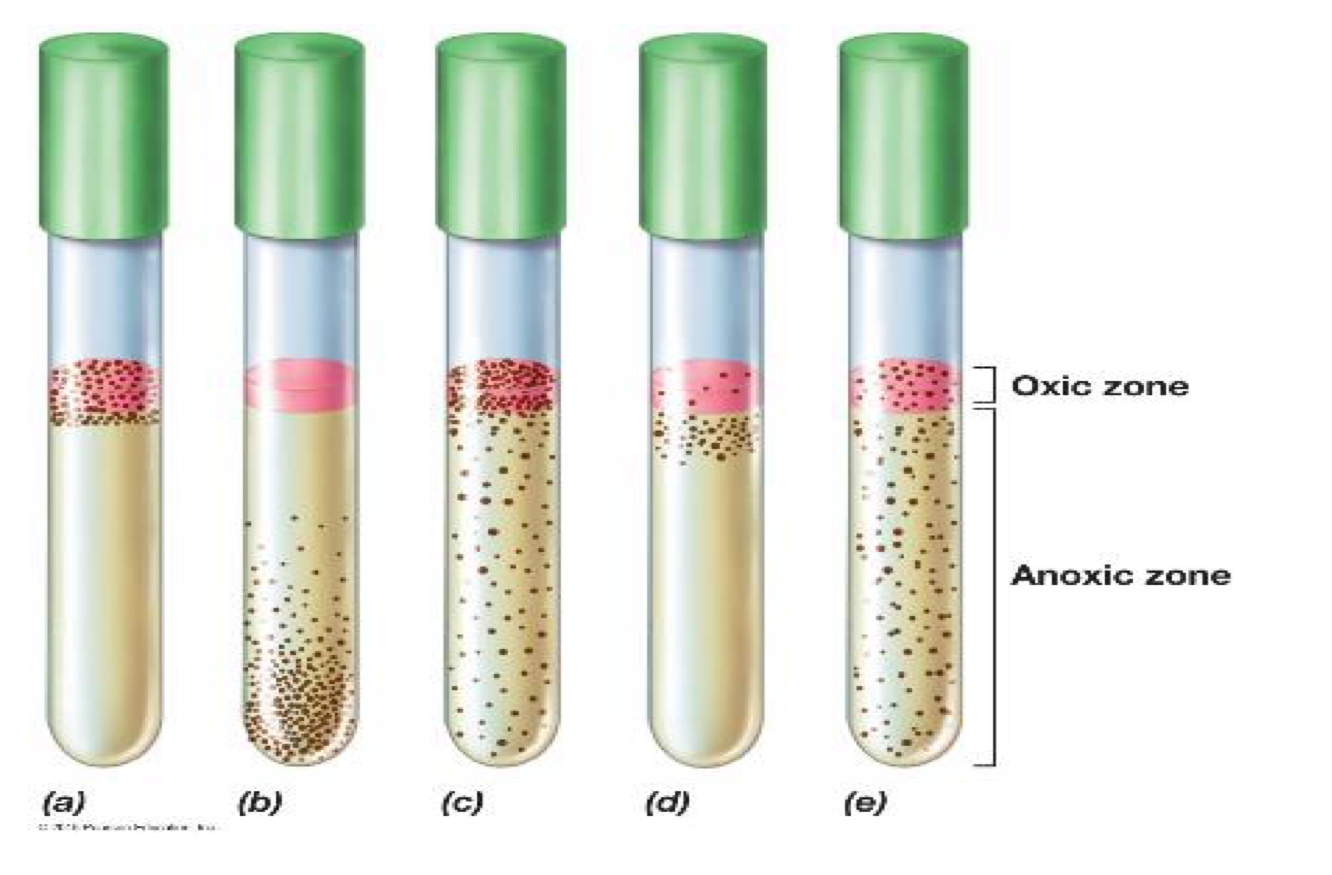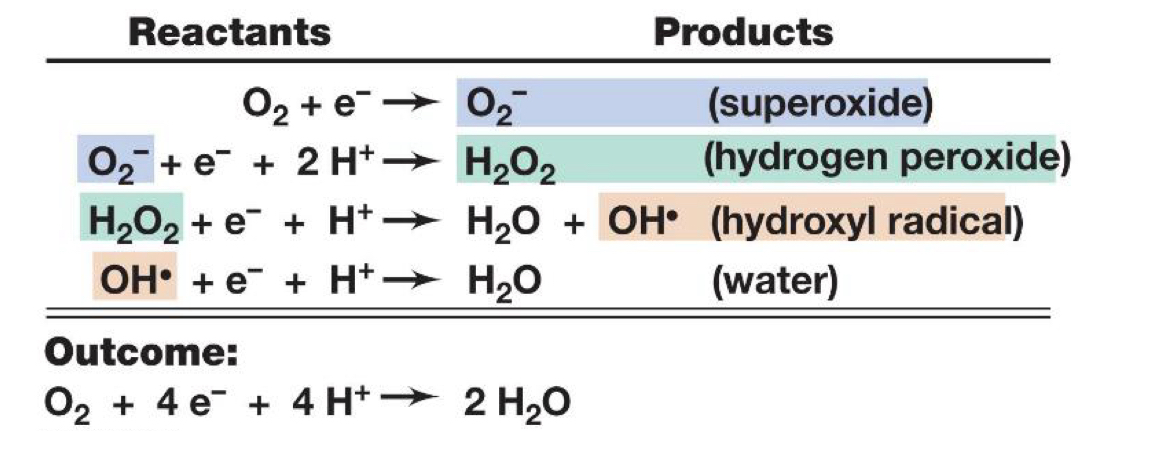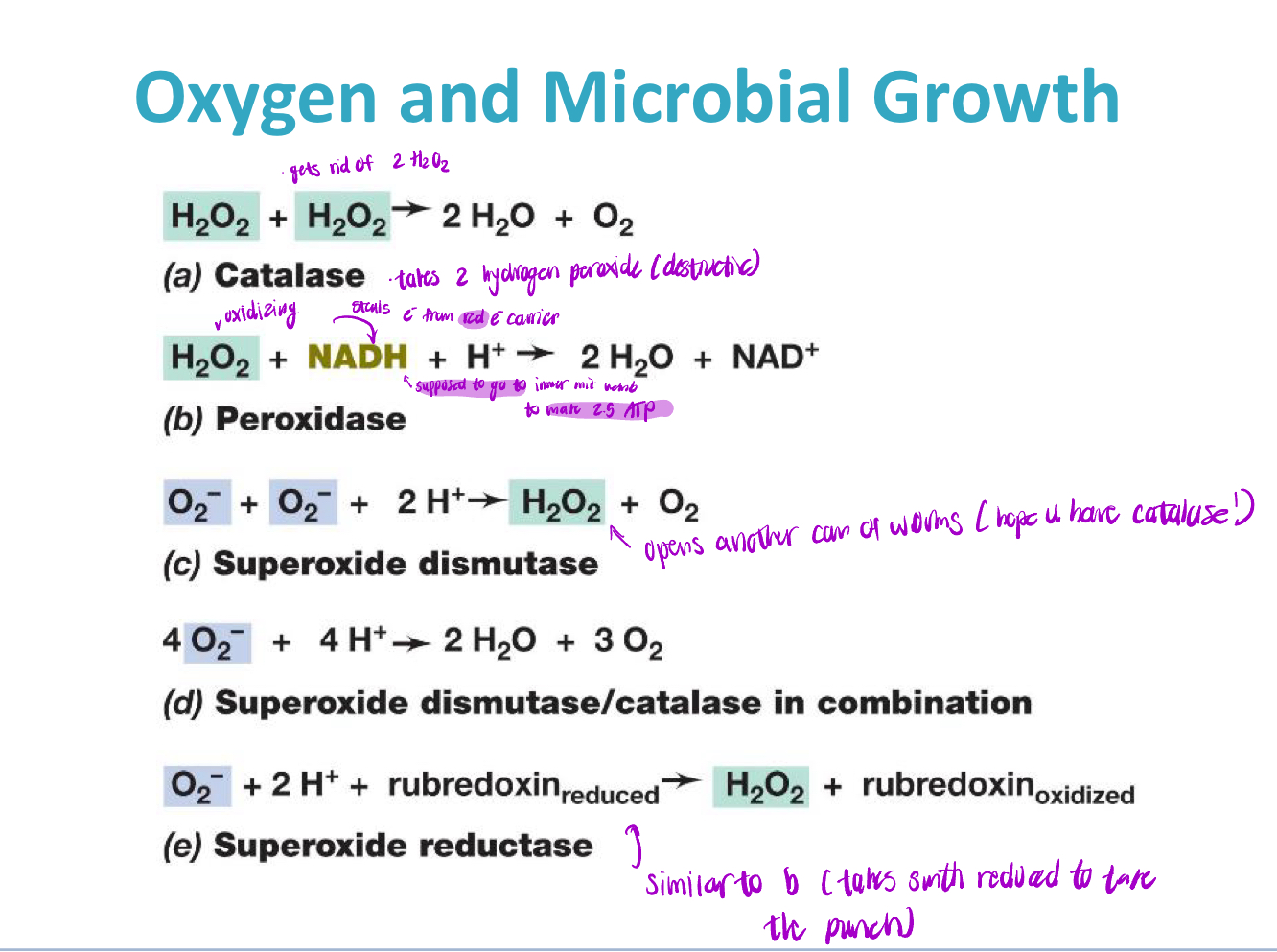Lecture #5 The Effect of Physical and Chemical Conditions on Microbial Growth
1/27
There's no tags or description
Looks like no tags are added yet.
Name | Mastery | Learn | Test | Matching | Spaced |
|---|
No study sessions yet.
28 Terms
Cardinal Growth Temperatures of Microorganisms
Temperature is a major environmental factor controlling microbial growth
Cardinal temperatures: the minimum, optimum, and maximum
temperatures at which an organism grows
These cardinal temperatures are characteristic of each different
organism
What are the different temperature classes of microorganisms?
Microorganisms can be classified into groups by their growth temperature optima
Psychrophile: low temperature optima
Mesophile: midrange temperature optima
Thermophile: high temperature optima
Hyperthermophile: very high temperature optima
Mesophiles
Mesophile: midrange temperature optima
Found in: warm blooded animals, terrestrial and aquatic environments, as well as temperate and tropical latitudes
What are the cold loving microorganisms?
Psychrophiles: Organisms with cold temperature optima (<20oC)
• Inhabit permanently cold environments
• Deep ocean, Arctic and Antarctic environments
Psychrotolerant: Organisms that can grow at 0ºC but have optima of 20ºC to 40ºC
• More widely distributed in nature than true
Molecular adaptations that support psychrophily:
Production of enzymes that function optimally in the cold
Modified cytoplasmic membranes which includes high unsaturated fatty acid content (pushes tails apart which makes it less likely to form van der waals forces, therefore more fluid)
The broad term for these cold living microorganisms is extremophiles
Extremophiles: Organisms that grow under very hot or very cold conditions
What are the heat loving microorganisms?
Thermophiles: organisms with growth temperature optima between
45ºC and 80ºC
excludes body temperature bc if it entered the body it would be asleep
found in terrestrial hot springs, very active compost
Hyperthermophiles: organisms with optima greater than 80ºC
• Inhabit hot environments, including boiling hot springs and seafloor hydrothermal vents that can experience temperatures in excess of 100ºC
• Current temperature maximum record is held by an archaeon, Methanopyrus kandleri, which can grow at 122C (for reference the autoclave is at 121 C)
the heat loving organisms are only prokaryotic bc only prokaryotic life forms can exist above 65C, includes chemoorganotrophs and Chemolithotrophs and high prokaryotic diversity (both bacteria and archaea represented)
At what temperature do only prokaryotic life forms exist
65 degrees Celsius
At what temperature does photography stop occurring
Above approximately 70C
This is bc it is less stable for other organisms and they can’t use photosystems
What are some molecular adaptations to thermophily?
• Specific modifications provide thermal stability to enzymes and proteins
• Modifications in cytoplasmic membranes to ensure heat stability
Ex: Bacteria have lipids rich in saturated fatty acids
Ex: Archaea have lipid monolayer rather than bilayer (more saturated, linear, more van der waals, ether instead of an ester which all contributes to more thermostability)
• Hyperthermophiles produce enzymes widely used in industrial
microbiology
Ex: Taq polymerase: used to automate the repetitive steps in the
polymerase chain reaction (PCR) technique
• Hydrolytic enzymes including proteases, cellulases and lipases
• Enzymes of thermophiles are more stable and tend to have higher
activity than their mesophilic counterparts
What is the temperature maxima for microbial growth?
New species of thermophiles and hyperthermophiles are still being
discovered
• Laboratory experiments with biomolecules suggest 140–150°C
Describe the evolution of hyperthermophily
Hyperthermophiles may be the closest descendants of ancient
microbes
Hyperthermophilic Archaea and Bacteria are found on the deepest, shortest branches of the phylogenetic tree
The oxidation of H2 is common to many Hyperthermophiles and may have been the first energy-yielding metabolism
How does pH effect microbial growth?
The pH of an environment greatly affects microbial growth
• Some organisms have evolved to grow best at low or high pH
Neutrophiles: organisms that grow best between pH 6 and 8
most organisms are neutrophiles
Depends on modifications whether they can grow outside the 6-8 pH range
Acidophiles: Organisms that grow best at low pH (<6)
Love acidic conditions but can also handle more neutral conditions
Alkaliphiles: Organisms that grow best at high pH (>9)
What are some of the adaptations that allow for microbial growth in different pH?
The microorganisms can adapt as long as the cytoplasmic membrane maintains its integrity at the growth pH (bc thats what most stuff need to function)
The internal pH of a cell must stay relatively close to neutral even though the external pH is highly acidic or basic
Microbial culture media typically contain buffers to maintain constant pH
• Each organism has an optimal pH for growth
• Some bacteria produce acids (Acetic, lactic, sulfuric acid → decreases the pH)
• Some bacteria grow on amino acids (Releases ammonia → increases the pH)
Describe how osmolarity affects microbial growth
Water activity (aw): water availability: expressed in physical terms- defined as the ratio of vapor pressure of air in equilibrium with a substance or solution to the vapor pressure of pure water. Reflects the amount of water that is interacting with ions and polar compounds in solution
i.e, how much water there is (if there is a lot of water activity, then things are well)
Presence of water will increase the pressure
• Typically, the cytoplasm has a higher solute concentration than the
surrounding environment → Water will want to move into the cell creating turgor pressure
• When a cell is in an environment with a higher external solute concentration water will flow out
• Cells can sometimes have mechanisms in place to prevent this
What are microbes that don’t like water?
Halophiles: grow best at reduced water potential; have a specific requirement for NaCl
many marine microbes are halophiles
Extreme halophiles: Require high levels of NaCl for growth, usually around 15 – 30%
Ex: Microbes from Great Salt lake or the Dead Sea
Halotolerant: can tolerate some reduction in water activity of environment but generally grow best at lower solute concentrations
Ex: Staphylococcus aureus
• Lives on human skin
• Grows best at low NaCl
• But can tolerate up to 17.5%
Osmophiles: Organisms that grow with high sugar as solute
keep their water but want to lose it (they only keep it to maintain internal conditions
Xerophiles: organisms able to grow in very dry environments
probably not growing a lot
Apply osmolarity and microbial growth to some practical applications
Environmental conditions (like high sugar, high salt, or low pH) affect microbial growth — and how humans can use these conditions to control or select for specific microorganisms in food preservation and fermentation.
Food preservation: honey, jams and jellies do not have many organisms growing in them (only specialized and rare organisms), helps explain why these foods don’t spoil easily.
Salted foods: High NaCl concentrations (as in beef jerky or salted cod) inhibit most microbes, preventing spoilage and disease.
Fermentation control: In foods like sauerkraut and pickles, a combination of high salt and low pH selects for acid-producing bacteria (like Lactobacillus), which are beneficial fermenters that outcompete pathogens.
How can organisms combat low water activity?
Mechanisms for combating low water activity in surrounding
environment involves increasing the internal solute concentration by:
Pumping inorganic ions from environment into cell
Synthesizing or concentrating organic solutes
• Compatible solutes: compounds used by cell to counteract low water activity in surrounding environment
Oxygen and Microbial Growth
Obligate aerobes: require oxygen to live
Strict anaerobes: do not require oxygen and may even be killed by
exposure
Facultative aerobes: can live with or without oxygen, they use oxygen when it is available
Aerotolerant anaerobes: can tolerate oxygen and grow in its presence even though they cannot use it
Microaerophiles: can use oxygen only when it is present at levels
reduced from that in air
What does thioglycolate broth do to oxygen?
Differences in oxygen use/tolerance can be distinguished using
thioglycolate broth
Thiglycolate is a complex medium that separates microbes based on oxygen requirements. Thioglycolate reacts with oxygen creating an anaerobic environment
• Oxygen can penetrate only the top of the tube
• Contains an oxygen responsive dye that turns pink in the presence of oxygen, colourless when the oxygen is low or absent

Describe the results of microbes in the thioglycolate broth
Obligate aerobe: grows only in the oxic zone at the top of the tube
needs O2 for cell respiration
Strict anaerobe: grows only in the anoxic zone at the bottom of the tube
Facultative anaerobe/aerobe: grows throughout the tube
• Better growth occurs in the oxic zone, where it can generate energy by aerobic respiration throughout the tube
Microaerophile: grows in a narrow band between the oxic and anoxic zones
• Needs O2 for aerobic respiration
• Killed by atmospheric O2 levels
Aerotolerant anaerobe: grows well throughout the tube
• Doesn’t use O2 (bc no ETC)
• Not harmed by O2 (has enzymes that deal with oxygen toxicity)
What are some techniques used to grow anaerobic microbes?
Adding reducing agents to the culture media (which will reduce oxygen)
Ex: adding Thioglycolate, cysteine, H2S and other sulfur containing compounds
Removal of air and replacement with an inert gas (like a “compatible stand in”)
Ex: Nitrogen or Argon

What are the different toxic forms of oxygen that can be formed spontaneously in the cell?
Superoxide anion
• Hydrogen peroxide
• Hydroxyl radical

What enzymes neutralize toxic oxygen species?
• Catalase
• Peroxidase
• Superoxide dismutase
• Superoxide reductase
Describe the chemical reaction that forms catalase
Starts w 2 H2O2 (hydrogen peroxide), destroys them to form water and oxygen
Do obligate anaerobes have the neutralizing enzymes?
Most obligate anaerobes lack some or all of these enzymes, they are delicate molecules that are protected by antioxidants
• They don’t have a mechanism to combat oxidative stress
Describe the chemical reaction that forms Peroxidase
H2O2 acts as an oxidizing agent (gets reduced) and steals an electron from NADH (an electron carrier that is supposed to go to the inner mitochondrial membrane to make 2.5 ATP ) the NADH gets reduced to NAD+
Describe the chemical reaction that forms Superoxide dismutase
Produces peroxide (which basically opens up another can of worms and you should hope you have catalase)
Describe the chemical reaction that forms Superoxide dismutase/ catalase in combination
Have 4O2- ions, produces water and O2 (no hydrogen peroxide produced)
Describe the chemical reaction that forms Superoxide reductase
similar to peroxidase reaction because something gets reduced to take the punch
Rubredoxin (reduced) → hydrogen peroxide rubredoxin (oxidized)